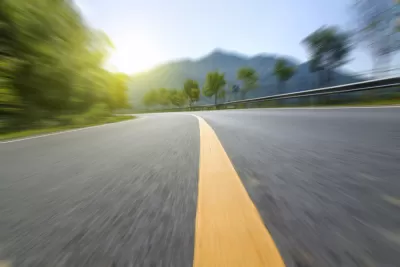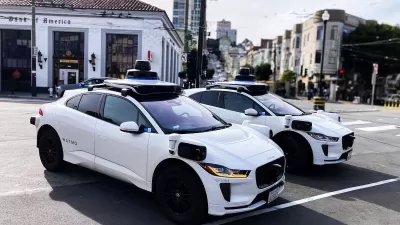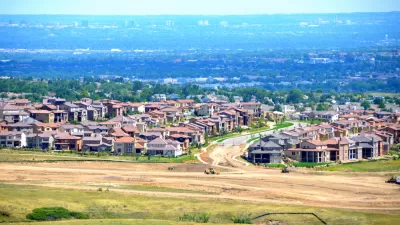Much of the focus on the potential of self-driving cars to effect change in the built environment has focused on dense, urban environments. But what is self-driving cars mostly enable continued outward expansion?

An article by Christopher Mims imagines the "weirdest thing" about a future of self-driving cars: where people will live.
Nearly everyone who has studied the subject believes these self-driving fleets will be significantly cheaper than owning a car, which sits idle roughly 95% of the time. With the savings, you will be able to escape your cramped apartment in the city for a bigger spread farther away, offering more peace and quiet, and better schools for the children.
Commuting from a "new class of exurbs" will be a luxurious affair, according to Mims, with none of the current hassles of the average commuter, particularly congestion. Mims calls on Robert McDonald, lead scientist for the Global Cities Program at the Nature Conservancy, to make the point that humans have proven themselves to spread out into sprawl as soon as their transportation modes begin to move faster.
Mims admits that he could be wrong, but not because Millennials prefer cities (an idea he debunks), but because self-driving cars could also "make cities livable in way they aren't now."
The article might be behind a paywall.
FULL STORY: Driverless Cars to Fuel Suburban Sprawl

Planetizen Federal Action Tracker
A weekly monitor of how Trump’s orders and actions are impacting planners and planning in America.

San Francisco's School District Spent $105M To Build Affordable Housing for Teachers — And That's Just the Beginning
SFUSD joins a growing list of school districts using their land holdings to address housing affordability challenges faced by their own employees.

The Tiny, Adorable $7,000 Car Turning Japan Onto EVs
The single seat Mibot charges from a regular plug as quickly as an iPad, and is about half the price of an average EV.

Seattle's Plan for Adopting Driverless Cars
Equity, safety, accessibility and affordability are front of mind as the city prepares for robotaxis and other autonomous vehicles.

As Trump Phases Out FEMA, Is It Time to Flee the Floodplains?
With less federal funding available for disaster relief efforts, the need to relocate at-risk communities is more urgent than ever.

With Protected Lanes, 460% More People Commute by Bike
For those needing more ammo, more data proving what we already knew is here.
Urban Design for Planners 1: Software Tools
This six-course series explores essential urban design concepts using open source software and equips planners with the tools they need to participate fully in the urban design process.
Planning for Universal Design
Learn the tools for implementing Universal Design in planning regulations.
Smith Gee Studio
City of Charlotte
City of Camden Redevelopment Agency
City of Astoria
Transportation Research & Education Center (TREC) at Portland State University
US High Speed Rail Association
City of Camden Redevelopment Agency
Municipality of Princeton (NJ)





























